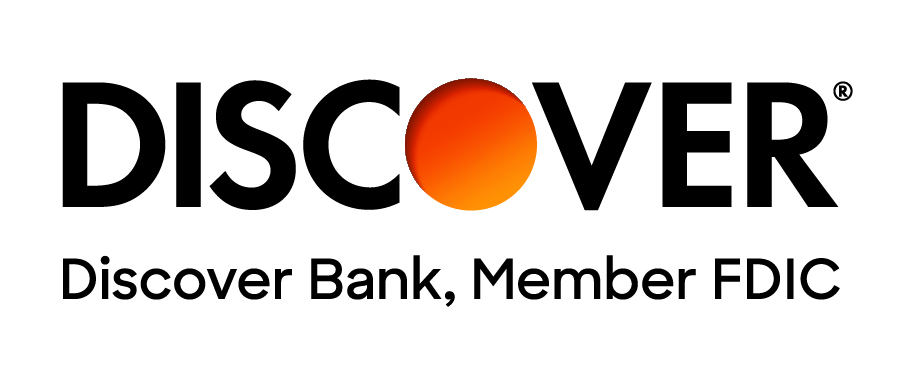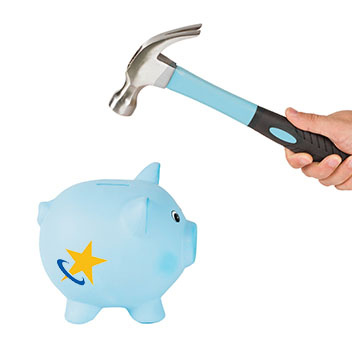The content and opinions provided on this site have not been provided or commissioned by any issuer of the financial products and/or services appearing on this site. The content and opinions have not been reviewed, approved or otherwise endorsed by an issuer. Offers may be subject to change without notice. For more information, please read our full disclaimer.
Getting started with finance can feel a little overwhelming, especially when you hear terms like “investing,” “stock market,” or “retirement account.” But don’t worry—no matter how you choose to invest, the main goal is simple: to grow your money.
What is Investing?
Investing is the act of using money to increase its value over time. While a safe option is to put money in a savings account, the growth rate is slow. On the other hand, investing involves some level of risk but can yield greater returns. For example, you can invest in real estate or valuable assets like gold or silver, expecting their value to increase. Another common option is to purchase stocks or invest in mutual funds. However, there is no guarantee of increasing value, and you could potentially lose money. Ultimately, investing is a traditional risk-return proposition.
- Investing can be a great way to diversify your finances and grow wealth over time.
- It is important to gain knowledge of the different types of investments available and how each one works.
- Familiarize yourself with the features and risks associated with any particular investment before making an investment decision.
Considerations When it Comes to Investing
Investing wisely involves using funds that won't be needed within the next five years, ensuring your current financial stability remains intact. Though market crashes can be intimidating, it's important to remember that overall, the market has a tendency to grow rather than shrink. By investing, you're allowing your money to generate income over time, giving you the potential for profitable returns.
Before you begin investing all your extra cash into stocks or bonds (we’ll get to those in a minute), you should take a moment to decide what you are comfortable with, what your overall goal/outcome should be, and how often you can or want to put money towards your investments. Choosing the right types of investments as a beginning investor can help you build a collection (or portfolio) of investments that will allow your money to go to work for you. Even if you have an extra $10 at the end of the month, using that cash to start investing now can help you have a healthy financial future.
Risk Tolerance
Every investment comes with some level of risk, as there is always a given amount of uncertainty in the world. Always be prepared for the potential of a negative financial outcome when investing. The value of your investment(s) will rise and fall based upon on the conditions of the market. The market can be affected by a variety of factors, but the main driver is typically the current economy. There is a chance that you can end up losing money and your level of comfort with this uncertainty is the risk tolerance you are willing to accept when investing your money.
While it is impossible to predict the economic upturns and downturns that will happen in the future, carefully look over the risks associated with each investment. You may want to vary your investments (known as diversification) as you invest over the years and with different goals in mind. No matter what kind of investment you choose, all come with some degree of risk.
Investment Goals
Many people begin investing aiming toward a particular financial goal or plan for their future. Common investment goals are:
- Saving for college
- Creating an emergency savings fund
- Buying a home
- Having and raising children
- Changing a career
- Retirement
- Or any other decision that may require a large amount of money in the future
When you are looking to create investment goals, you may want to use the following SMART goals outline to help you create a more specific vision for your goal:
Specific: have a clearly defined goal
Measurable: give yourself a specific target for when you know you’ve achieved the goal
Achievable: make sure your goal is something that you can realistically accomplish
Relevant: your goal should be applicable to the life you’re living and creating
Timely: lay out a realistic timetable that enables you to track your progress
Hold yourself accountable for your goals, but also be willing to understand that sometimes circumstances might require your goals to change. Life doesn’t always happen the way we think it should and your goals may need to be flexible.
Consistency
When you start investing, aim to consistently grow your investments. Whether it's contributing to your employer's 401(k) plan or investing even a small amount like $5, the goal remains the same—securing your financial future.
Depending on your account type, you can set up automatic deposits from your paycheck or manually choose investments. By making investing a habit and allocating a portion of your income, you create opportunities for your money to flourish.
Sponsored Ad
Best Beginner Investments
401(k)s, Roth IRAs & Traditional IRAs
If you are looking to begin investing toward your retirement (and it’s never too early to start), signing up for a 401(k) or an IRA is a great place to start. These accounts are created specifically with long term goals in mind (such as retiring) and so the sooner you start putting money into these accounts, the greater growth potential they have.
If you work, your employer may have a 401(k) program already set up and may offer to match whatever you put in up to a set percent. Matching means that whatever amount of money you put in, your company will also put in a portion of money to your account. Essentially, this is free money from your employer and guarantees at least some return on your investment.
High-Yield Savings Accounts
A high-yield savings account typically offers higher interest rates than regular savings accounts and is especially useful in helping you save money for an emergency fund. Traditional savings accounts may pay you an interest rate as low as 0.01%, but high-yield savings accounts can allow you to access interest rates that range from 1-2.2%.
Different high-yield accounts may have different requirements, such as maintaining a required amount of money in the account at all times (a minimum balance) or paying a monthly or yearly service fee. Not all accounts come with these stipulations and there may be ways to waive these requirements. You may also be able to link a debit card to your account. This will allow you access to your money at an ATM (which may also have a fee associated with it). You may want to research a few different banks to see what terms and conditions are available to you when it comes to a high-yield savings account.
Certificates of Deposit (CDs)
CD accounts are a bit like a savings account, but the money you put into the account is usually a set amount, also known as the principal or a lump sum and this money is meant to remain in the CD for set time period. The money deposited into a CD typically has an interest rate that is locked for the same set period of time (also known as the term). Many CD accounts will charge you a penalty if you need to take out (withdraw) your money early. Once the account reaches the end of the time period, (or it reaches maturity), you can withdraw your money without paying the penalty, or you may have the option to renew your CD with the current balance (including earned interest) with the same terms, thus allowing you to tap into compound interest.
Because you agree to “loan” your money to the lender for a specific amount of time, CD accounts usually will have higher interest rates than typical savings accounts. This also allows for you to earn more savings while avoiding the risk associated with other types of investments. Some accounts may have a minimum amount required to open the account, and typically the longer you allow your money to be in a CD, the higher the annual percentage yield (AYP).
Stocks
When you invest in stocks, you are essentially buying shares of a company, becoming a partial owner. The expectation is that the company will thrive and expand over time, increasing the value of your shares. This rise in value may attract other investors who are willing to purchase your stocks at a higher price, enabling you to make a profit.
Although there have been fluctuations in the stock market's performance, stocks generally perform well over the long term for patient investors. On average, the stock market provides an annual return of 10%. However, it is crucial to be prepared to keep your money invested for several years to achieve significant gains.
To begin investing in stocks, you will need a brokerage account. While a professional financial advisor can assist you in navigating the stock market according to your financial objectives, keep in mind that they may charge fees or a percentage of your gains. For beginners, online brokers and robo-advisors can fulfill most of your needs.
Online brokers offer the option to purchase and manage your individual stocks through their website. On the other hand, a robo-advisor, powered by computer algorithms, acts as a virtual investment advisor, selecting, managing, and monitoring your investments based on your stated goals and timeline.
Bonds
Bonds are a different financial product as they are created in a similar structure as a loan. You buy a bond from a company, municipality or government, and the bond issuer agrees to pay a declared interest rate over a certain amount of time. When companies or governments need to raise money, they often turn to bonds.
Each bond comes with a face value, or the value you will receive when the bond reaches maturity (the agreed upon time period the bond is issued for). The coupon rate of a bond is the annual rate of interest that you will receive for your bond. Higher coupon rates mean that you will collect higher interest payments on the bond. You may receive semi-annual, quarterly, or monthly payments depending on the terms of the bond. Lastly, each bond will have a maturity date in years that tells when the money you loaned will be repaid back to you in full.
Target-Date Mutual Funds
If you hold a retirement plan you may have a target-date mutual fund. These are investments that are automatically invested in with an estimated retirement year as a goal. These mutual funds often hold a variety of stocks and bonds, depending on the planned target-date fund. How aggressive or conservative your fund is will depend on how close you are to your target-date.
If you are planning to retire in 35 years, or around 2057, your fund will mostly hold stocks since your retirement date is far away and stock returns tend to be better for long term investing. (Tip: if you are looking at target-date mutual funds, look for the date you plan to retire in the name.) As you near retirement, your mutual fund will move more of your money toward bonds as they are less risky investments as you near retirement and will be counting on your money.
Index Funds
Index funds are a collection of investments that are representing a particular portion of the market. A popular market index is the S&P 500 which holds stocks of about the 500 of largest U.S. companies. If you were to buy an S&P 500 index fund, the intent of the fund would be to copy the performance of the S&P 500.
Index funds do not have the human element of active traders, but rather are an investment tool for investors who are looking for lower risk and prefer to be more passive in their investing.
Exchange-Traded Funds (ETFs)
Like index funds, ETFs give you access to a particular group of investments. This could be a particular industry (such as technology), commodity (such as crude oil), or currency (such as for bitcoin and speculating on the prices of other countries’ currency.) EFTs are traded daily, and EFT share prices fluctuate in a similar manner to that of a stock. Investment apps such as Robinhood allow investors to purchase EFTs, or you can use brokerages with dedicated investors to buy and trade EFTs.








